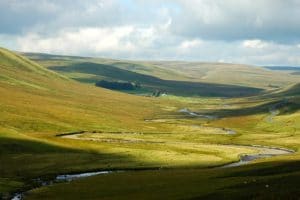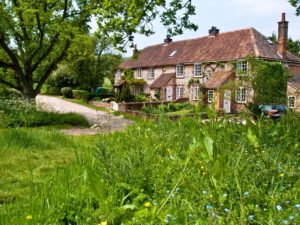Support us from £3/month
We deal with almost 1000 cases a year assisting communities, groups and individuals in protecting their local spaces and paths in all parts of England and Wales. Can you help us by joining as a member?
Today, 25 July, marks the sixtieth anniversary of the establishment by parliament of the Royal Commission on Common Land in 1955. The commission made far-reaching recommendations for the future of commons in England and Wales.
The society had been pressing for a royal commission for some time. In October 1953 it asked the Minister of Agriculture for this. It had been concerned by the tenor of a debate in the House of Lords in July 1953 on derelict land and agriculture in which there was a call to make commons more productive. Consequently, the society pressed the Ministry of Agriculture for a high-level, broad investigation of commons.

The Elan Valley where the society won rights of access to common land in the Birmingham Corporation Water Act 1892. Photo: Liz Fleming-Williams
The commission was made up of erudite persons, charged to recommend what changes, if any, are desirable in the law relating to common land in order to promote the benefit of those holding manorial and common rights, the enjoyment of the public, or, where at present little or no use is made of such land, its use for some other desirable purpose.
There were 12 members. It was chaired by barrister Sir William Ivor Jennings and included Laurence Dudley Stamp (geographer), Charles Arnold-Baker (barrister and secretary of the National Association of Local Councils), local historian W G Hoskins and one woman, Florence Beatrice Paton (former Labour MP for Rushcliffe, Nottinghamshire).
Travelling
The commissioners spent about 18 months travelling through England and Wales to gather written and oral evidence—from 156 organisations, 97 individuals, 61 county and 81 county borough councils.
The society prepared its written evidence early and circulated it to garner support for its position. It recommended management schemes to ensure the better use of commons with a strong and representative committee. Public access was to be part of the scheme, and the status of commons should be preserved to prevent enclosure. The society advocated a commons commission to approve schemes.
It took us nearly two days to present our oral evidence, the first non-government body to do so. Our Journal of April 1957 records that our witnesses (the chairman Lt Col E N Buxton, vice-chairman J B Henderson, consultant Humphrey Baker and secretary W H Williams) were accorded ‘a lively hearing’.
When the report was published on 18 July 1958 the society welcomed it as many of its recommendations chimed with its own proposals. In brief, the commission recommended the registration of all commons, with a public right to walk there and schemes of management.
The publication of the report in 1958 was the start of a new era for commons.

